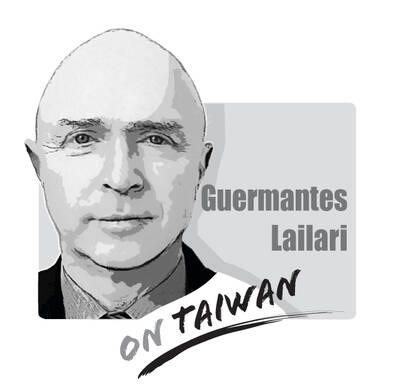The latest Cabinet reshuffle shows that President William Lai’s (賴清德) administration wants to promote consistent and coherent policies, while reassuring the business community and local industries. It also aims to restore public confidence as Taiwan’s economy faces rising challenges from the US government’s new tariffs and the explosive growth in artificial intelligence (AI).
The new lineup includes former Executive Yuan secretary-general Kung Ming-hsin (龔明鑫) as minister of economic affairs and former Chung-Hua Institution for Economic Research president Yeh Chun-hsien (葉俊顯) as head of the National Development Council. Other top finance and statistics officials — such as Minister of Finance Chuang Tsui-yun (莊翠雲), Financial Supervisory Commission Chairman Peng Jin-lung (彭金隆) and Directorate-General of Budget, Accounting and Statistics (DGBAS) Minister Chen Shu-tzu (陳淑姿) — have been retained.
Kung served as the minister of the National Development Council and the deputy minister of economic affairs before taking the Executive Yuan post last year. He helped shape initiatives such as the “5+2 Innovative Industries Plan” and the “Asia Silicon Valley” project under former president Tsai Ing-wen (蔡英文). Yeh is an Academia Sinica researcher and a member of the ruling Democratic Progressive Party’s New Frontier Foundation think tank. He has long assisted the government in policy planning and helped assess its relief policies during the COVID-19 pandemic.
The changes come as Taiwan’s economy is exhibiting a contradictory phenomenon. On one hand, GDP grew 8.01 percent year-on-year in the second quarter, accelerating from the first quarter’s 5.45 percent growth. The DGBAS revised up its full-year GDP growth forecast to 4.45 percent, from a forecast of 3.1 percent issued in May, suggesting strong growth momentum. On the other hand, retail sales in July fell 3.6 percent year-on-year, the fourth consecutive month of decline, while consumer confidence last month weakened to the lowest level in two-and-a-half years. A six-month outlook gauge for the manufacturing sector showed poor visibility for the second half of the year, indicating divergent economic signals.
The second-quarter GDP performance reflected the nation’s robust exports driven by global demand for AI and other emerging technologies. Nevertheless, the breadth of exports has contracted, with traditional industries — such as machine tools, plastics and rubber products, textiles and transportation equipment — battered by tariff uncertainty, slowing global demand and the New Taiwan dollar’s appreciation. That highlights an important issue: Most local industries have not grown simultaneously to support the economy in registering a balanced expansion.
An essential task for the new Cabinet members would be to assist small and medium-sized firms and non-tech industries to overcome tariff-related difficulties and improve their global competitiveness as the economy undergoes a structural transformation. Other objectives are just as important, such as helping keep Taiwan Power Co afloat, ensuring a sufficient supply of electricity for emerging AI applications, dealing with challenges that hinder the smooth transition to green energy, boosting industrial innovations to establish a firmer foundation for future development and maintaining a steady pace toward net zero carbon emissions. All of these issues have to be addressed with pragmatic, effective measures.
However, one daunting task facing the new Cabinet is maintaining strong investment momentum in Taiwan, as Taiwanese businesses are increasingly investing overseas to deal with global supply chain restructuring and the dramatic changes brought about by US President Donald Trump’s trade policies. Meanwhile, close collaboration between new and experienced ministers, as well as a healthy relationship between the ruling and opposition parties, is certain to prove essential.

Chinese state-owned companies COSCO Shipping Corporation and China Merchants have a 30 percent stake in Kaohsiung Port’s Kao Ming Container Terminal (Terminal No. 6) and COSCO leases Berths 65 and 66. It is extremely dangerous to allow Chinese companies or state-owned companies to operate critical infrastructure. Deterrence theorists are familiar with the concepts of deterrence “by punishment” and “by denial.” Deterrence by punishment threatens an aggressor with prohibitive costs (like retaliation or sanctions) that outweigh the benefits of their action, while deterrence by denial aims to make an attack so difficult that it becomes pointless. Elbridge Colby, currently serving as the Under
The Ministry of the Interior on Thursday last week said it ordered Internet service providers to block access to Chinese social media platform Xiaohongshu (小紅書, also known as RedNote in English) for a year, citing security risks and more than 1,700 alleged fraud cases on the platform since last year. The order took effect immediately, abruptly affecting more than 3 million users in Taiwan, and sparked discussions among politicians, online influencers and the public. The platform is often described as China’s version of Instagram or Pinterest, combining visual social media with e-commerce, and its users are predominantly young urban women,
Most Hong Kongers ignored the elections for its Legislative Council (LegCo) in 2021 and did so once again on Sunday. Unlike in 2021, moderate democrats who pledged their allegiance to Beijing were absent from the ballots this year. The electoral system overhaul is apparent revenge by Beijing for the democracy movement. On Sunday, the Hong Kong “patriots-only” election of the LegCo had a record-low turnout in the five geographical constituencies, with only 1.3 million people casting their ballots on the only seats that most Hong Kongers are eligible to vote for. Blank and invalid votes were up 50 percent from the previous
Alarm bells over a “hollowing out” of Taiwan’s semiconductor industry and US demands for “protection money” have fueled a panic over Taiwan. To understand how misplaced these fears are, consider the movements of global technology giants. Nvidia Corp CEO Jensen Huang (黃仁勳), Advanced Micro Devices Inc (AMD) CEO Lisa Su (蘇姿丰) and Taiwan Semiconductor Manufacturing Co (TSMC) chairman C.C. Wei (魏哲家) could undoubtedly understand the situation best, and they continue to make key investments in Taiwan. They do not make decisions on a whim. They are the architects of global computing power strategy and possess the highest levels of industry knowledge. No